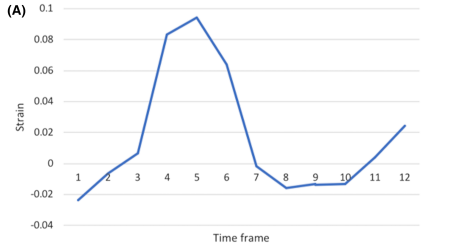

Detecting liver fibrosis using a machine learning-based approach to the quantification of the heart-induced deformation in tagged MR images
Liver disease causes millions of deaths per year worldwide, and approximately half of these cases are due to cirrhosis, which is an advanced stage of liver fibrosis that can be accompanied by liver failure and portal hypertension. Early detection of liver fibrosis helps in improving its treatment and prevents its progression to cirrhosis. In this work, we present a novel noninvasive method to detect liver fibrosis from tagged MRI images using a machine learning-based approach. Specifically, coronal and sagittal tagged MRI imaging are analyzed separately to capture cardiac-induced deformation of the liver. The liver is manually delineated and a novel image feature, namely, the histogram of the peak strain (HPS) value, is computed from the segmented liver region and is used to classify the liver as being either normal or fibrotic. Classification is achieved using a support vector machine algorithm. The in vivo study included 15 healthy volunteers (10 males; age range 30–45 years) and 22 patients (15 males; age range 25–50 years) with liver fibrosis verified and graded by transient elastography, and 10 patients only had a liver biopsy and were diagnosed with a score of F3-F4. The proposed method demonstrates the usefulness and efficiency of extracting the HPS features from the sagittal slices for patients with moderate fibrosis. Cross-validation of the method showed an accuracy of 83.7% (specificity = 86.6%, sensitivity = 81.8%). © 2019 John Wiley & Sons, Ltd.



